MXA INTERVIEW MICHAEL STAUFER: KTM TEST RIDER WHO NEVER STOPPED RACING
 Michael Staufer is KTM’s lead R&D test rider for the 450SXF in Austria.
Michael Staufer is KTM’s lead R&D test rider for the 450SXF in Austria.
BY JOSH MOSIMAN
HOW DID YOU GET STARTED IN MOTOCROSS? I was 3-1/2 years old when I started on a PW50. We had a small farm, and my father was already racing enduros. My father raced the International Six Days Enduro (ISDE) three times, and he also raced the Austrian Enduro Championship. I was somewhere at a race track almost every weekend. When I was 6 or 7 years old, I started racing motocross locally when my father stopped with enduro to take care of my racing.
“I WAS 3-1/2 YEARS OLD WHEN I STARTED ON A PW50. WE HAD A SMALL FARM, AND MY FATHER RACED THE INTERNATIONAL SIX DAYS ENDURO (ISDE) THREE TIMES, AND HE ALSO RACED THE AUSTRIAN ENDURO CHAMPIONSHIP.”
WHEN DID YOU GET SERIOUS WITH MOTOCROSS? I got serious at 12 or 13 years old when I was racing the Austrian 85 Championship. When I was 14, I jumped on a 125. At this time, it was easier to race the 125 World Championships. When it was close by, you could show up and try to qualify. At that time, you didn’t need to spend so much money and have a team get you in. We had a small camper trailer, and I tried to do the European Championship and the 125 World Championship races that were close to Austria. Qualifying was always my weak point. I was 15 when I first qualified for a European Championship race. When I was 17, I went to four World Championship GP races and qualified twice.
 Michael Staufer has raced the Over-40 Pro class at the World Vet Championships for two years now, ’21 and ’22. -photo by Josh Holley
Michael Staufer has raced the Over-40 Pro class at the World Vet Championships for two years now, ’21 and ’22. -photo by Josh Holley
WHERE DID YOU GO FROM THERE? In my time, the four-strokes were not around; the first Yamaha four-stroke came later. In Austria, it was quite common that when you were 15 and 16 years old you raced both the 125 and 250 classes. There were races almost every weekend in Austria, and when there was time, we tried to go to international races. Starting in 2000, I spent two years racing for Yamaha in Germany with Gareth Swanepoel as my teammate. Then I came back to Austria to do the Austrian Championship. I started racing the MX3 World Championship when I started with KTM in 2005. I did the whole World Championship for six years with the KTM 540, and when they changed the rules, I switched to the KTM 450SXF. I finished seventh overall two times in 2006. I finished seventh in points in 2011 with a season best of fifth overall, which was quite nice for me.
AT 43 YEARS OLD, HOW MUCH LONGER WILL YOU KEEP RACING? My girlfriend and my parents think after each season I will be done racing. I think right now, they think that next season I will not race, but I’m quite sure I will race. Besides the two years I lived in Germany and raced in the German Championship, I have raced the Austrian Championship every year since I was 12 years old.
 Michael was the first motocross rider to be sponsored by Red Bull. He was sponsored at 15 years old in 1994.
Michael was the first motocross rider to be sponsored by Red Bull. He was sponsored at 15 years old in 1994.
HOW COMPETITIVE HAVE YOU BEEN IN THE AUSTRIAN CHAMPIONSHIP? I would say, in Austria, that you could bring the best riders from all over the world and they wouldn’t beat us in our races. We do a little bit of a different sport with track layouts and conditions in Austria. When I come to the U.S. and ride tracks like Glen Helen, it is nothing like what we have in Austria. There was a time when the organization would bring riders like Sven Breugelmans to race in Austria. He was the 2008 MX3 World Champion, but there was no chance that he could beat me when he came to race in Austria; however, when we went to the World Championship, I couldn’t compete with him. In Austria, I never hit fifth gear. Our tracks aren’t so fast, and they are technical with lots of natural terrain. Even the American test riders have struggled when they’ve come to ride our tracks.
“I WAS A SIX-TIME AUSTRIAN CHAMPION, AND I THINK I’VE FINISHED SECOND IN THE CHAMPIONSHIP 15 TIMES [LAUGHS]. I DON’T KEEP TRACK OF THE YEARS I’VE FINISHED SECOND, BUT I’M SURE I HOLD THE RECORD FOR IT.”
DOES KTM LIKE THAT YOU KEEP RACING THE AUSTRIAN CHAMPIONSHIP? I think it’s quite important for my job to prove the bikes that we test during the week will work at the races. When you are pushing the bike 110 percent, you realize if the testing on the bike has worked. Sometimes the bike feels good in practice, but then you go to the race and it’s not good. Also, to keep me in better shape, it’s easier to have the goal of racing to work towards. It keeps me motivated and makes it easier to get my job done.
I think my boss likes that I still try to prove myself and that I race on the prototype bikes we are working on to develop them. We have a main test rider for each bike in each class. I’m the 450SXF test rider, and that’s what I race. We also have test riders for the 250SXF, 350SXF, 125SX, 250SX and 300SX. All of our main test riders also race the Austrian Championship on prototype bikes. For a long time, it was me, Guenter Schmidinger and Matthias Walkner—three KTM test riders battling close for the win in the Austrian Championship.
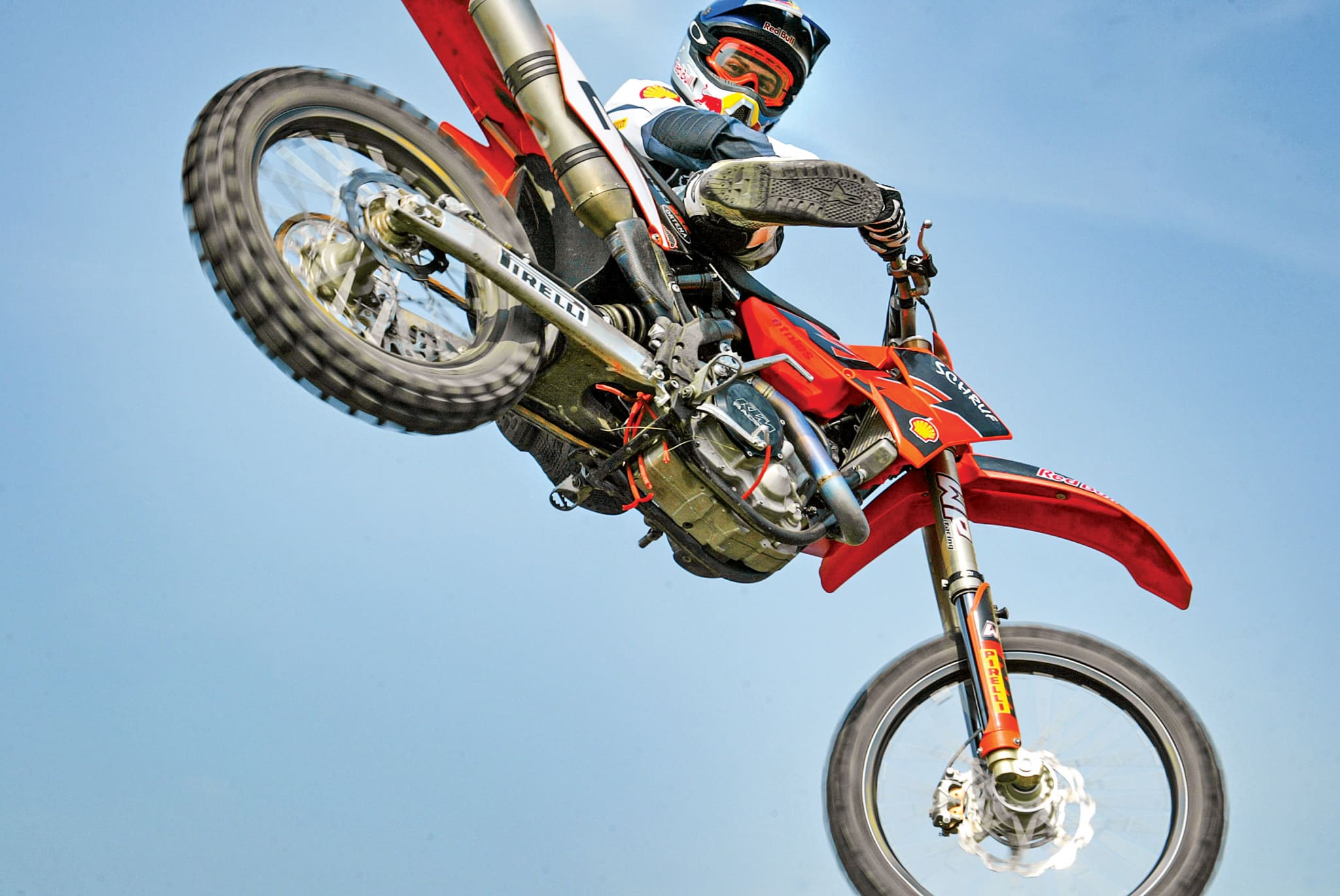 Michael Staufer on the 2005 KTM 450SXF with the no-link PDS shock.
Michael Staufer on the 2005 KTM 450SXF with the no-link PDS shock.
HOW HAVE YOU FINISHED IN THE AUSTRIAN CHAMPIONSHIP OVER THE YEARS? I was a six-time Austrian Champion, and I think I’ve finished second in the Championship 15 times [laughs]. I don’t keep track of the years I’ve finished second, but I’m sure I hold the record for it. The last time I won a race was probably in 2012. Nowadays, I’m usually finishing in the 6th through 10th spots. I’m still good at getting the holeshot and leading for a few laps. The last two years Honda has won the Austrian Championship, but if you look at the results, there are quite a lot of KTM, Husqvarna and GasGas bikes.
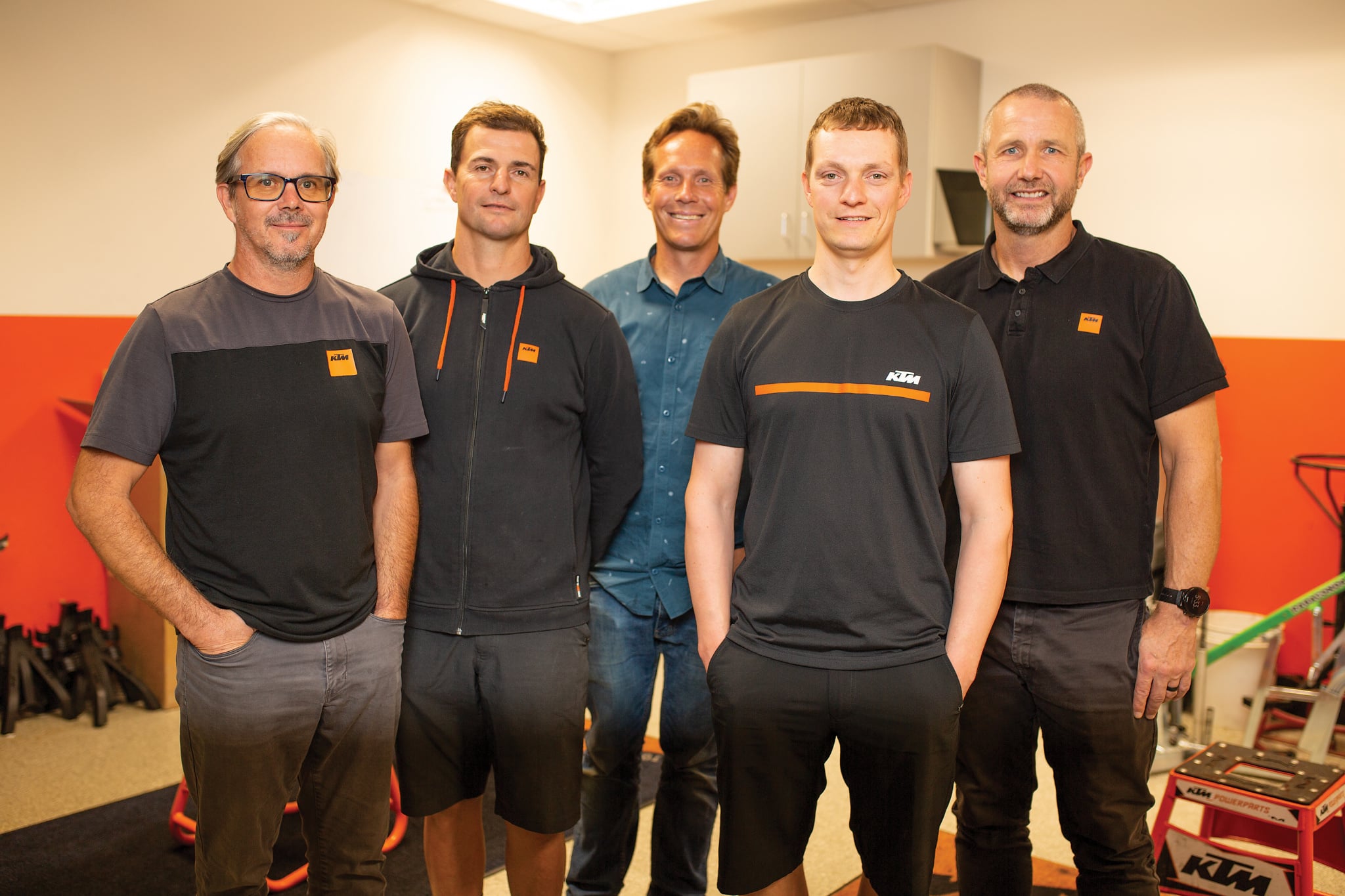 From left to right, Leigh Crawford, Michael Staufer, Casey Lytle, Guenter Schmidinger, and Quinn Cody pose for a team photo. Leigh, Casey, and Quinn are a part of the American-based KTM R&D crew. -photo by Josh Holley
From left to right, Leigh Crawford, Michael Staufer, Casey Lytle, Guenter Schmidinger, and Quinn Cody pose for a team photo. Leigh, Casey, and Quinn are a part of the American-based KTM R&D crew. -photo by Josh Holley
WHEN DID YOU START AS AN R&D TEST RIDER FOR KTM? I started racing for KTM in 2005, and I also started as a test rider that year. From 2005 through 2010, I was a test rider and racer. I was less involved in R&D then, but from about 2010 on, I started to get more involved with R&D. From 2012 on, I’ve been doing almost all the organizing around R&D testing. I organize the details and plan with the WP guys and the engine guys. I figure out which track to test at. I organize which riders we take, which hotels we use, and many times I prepare the bikes by myself. I get to do a lot of riding, but there’s also a lot of work in the race shop. I write reports and work on the computer, too. That’s my weak point. I would rather change 10 tires with mousses than sit in front of a computer.
When I was racing for KTM early on, it was my goal to earn a factory ride for the MX3 Championship. But when that didn’t happen, I asked for a job testing with KTM, and they agreed. From then on, starting in 2010, I’ve taken a role where my time is focused maybe 70 percent on R&D and 30 percent on my own racing.
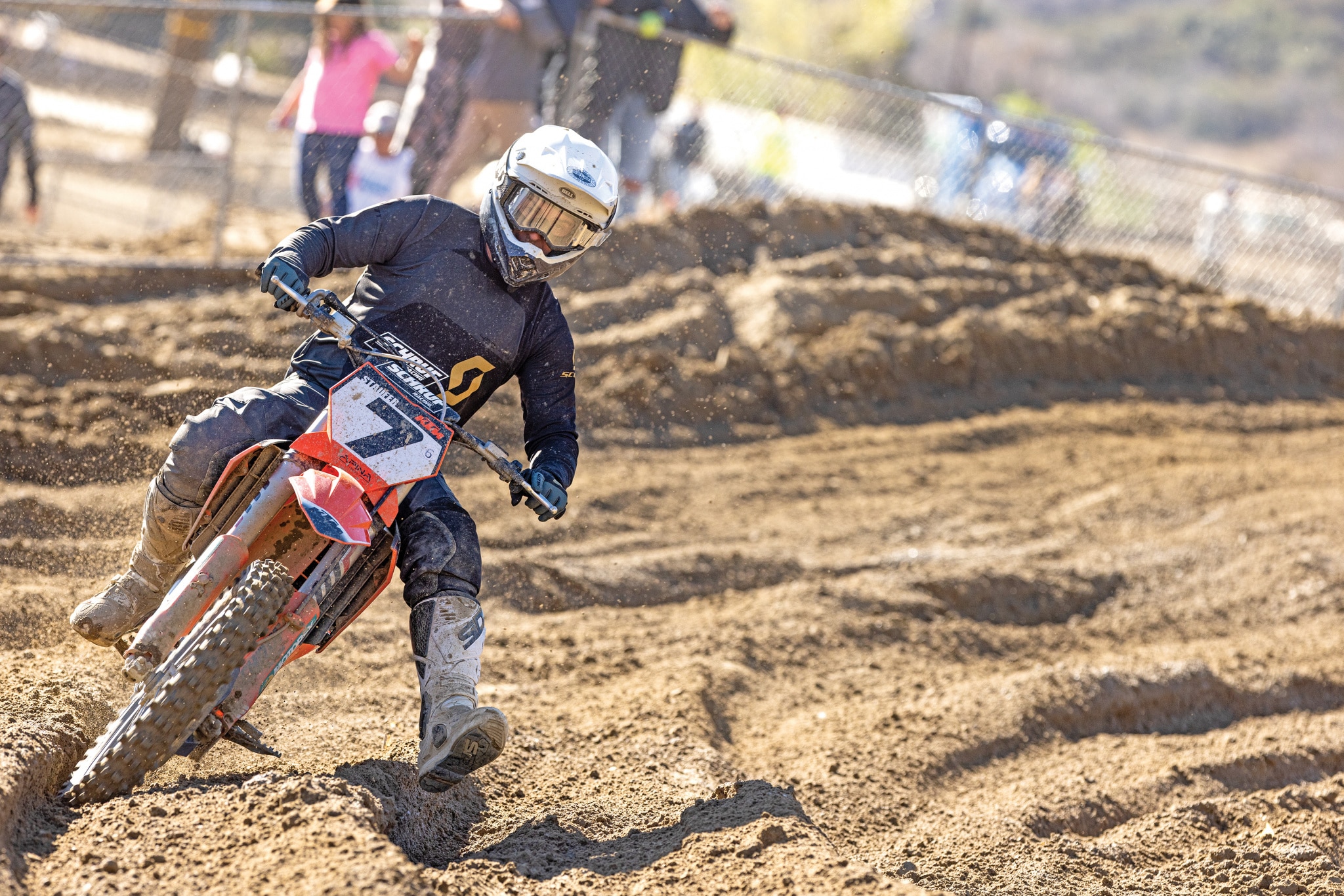 Michael Staufer finished fourth overall in the Over-40 Pro class at 2022 World Vet race. His 3-4 moto scores were edged out by Jeremy McGrath’s 4-3 finishes.
Michael Staufer finished fourth overall in the Over-40 Pro class at 2022 World Vet race. His 3-4 moto scores were edged out by Jeremy McGrath’s 4-3 finishes.
WERE YOU A FACTORY RIDER FOR KTM STARTING IN 2005? I was with KTM to race the Austrian Championship and the MX3 World Championship. I had factory support, but I was at the races with my camper and my mechanic, so I wasn’t on the complete factory team. At the time, I was also a Red Bull athlete. I got sponsored by Red Bull in 1994 and was the first motocross athlete to be sponsored by Red Bull. There were no Red Bull helmets or anything back then. Red Bull wasn’t such an international brand. The lucky thing for me is that when I came to KTM in 2005, Red Bull opened its first training facility near KTM in Austria. I stayed there from November 2004 until one week before the first GP in 2005. The training facility is a high-end fitness center with trainers, doctors and physical therapists. I went there for four months in the wintertime, training five days a week in the most professional training program. That makes the biggest difference for me on race day when I stand behind the gate knowing I am ready. I gained confidence from training there over the wintertime for four years.
WHAT WAS IT LIKE WHEN KTM BROUGHT ON ROGER DECOSTER AND RYAN DUNGEY? The biggest difference was with the 450 engine, which Dungey was on in his first Supercross season. The year before was my last Austrian Championship title. With that engine, we went from a double-cam engine to this single-cam engine. We had Stefan Everts involved with testing frame geometry and the chassis. We also put linkage on the bike instead of PDS. With Dungey, Everts and our test crew, that’s when we made big changes on the bike. Signing Ryan Dungey and KTM changing to rising-rate linkages made the biggest difference. The twin-cam 450 was the strongest engine I’ve ever ridden, but it was not made for Supercross. I think the communication between R&D, Roger Decoster and Ian Harrison is a really good thing.
WHAT SETS KTM APART FROM OTHER BRANDS? Everyone in our R&D department is passionate. On the R&D side, I work with about 20 people. It’s smaller than you would think, but we work together closely, like a family. Last year the main boss in R&D came with me to California, and he packed my gates for me at the World Vet Championship. I don’t know if the bosses from the Japanese brands go to prepare the gate for their riders. This, I think, makes the difference.
When I think about the endurance testing we do, I think about our long days at Lommel. If you haven’t been to Lommel in the wintertime, you won’t understand how tough it is. But when something lasts there, then it is proven. I try to find the fastest rider that we can get and bring him to the deepest sand tracks in Belgium. We test every part, and it can be hard on the riders, but when there is passion there, we can make it fun, too.
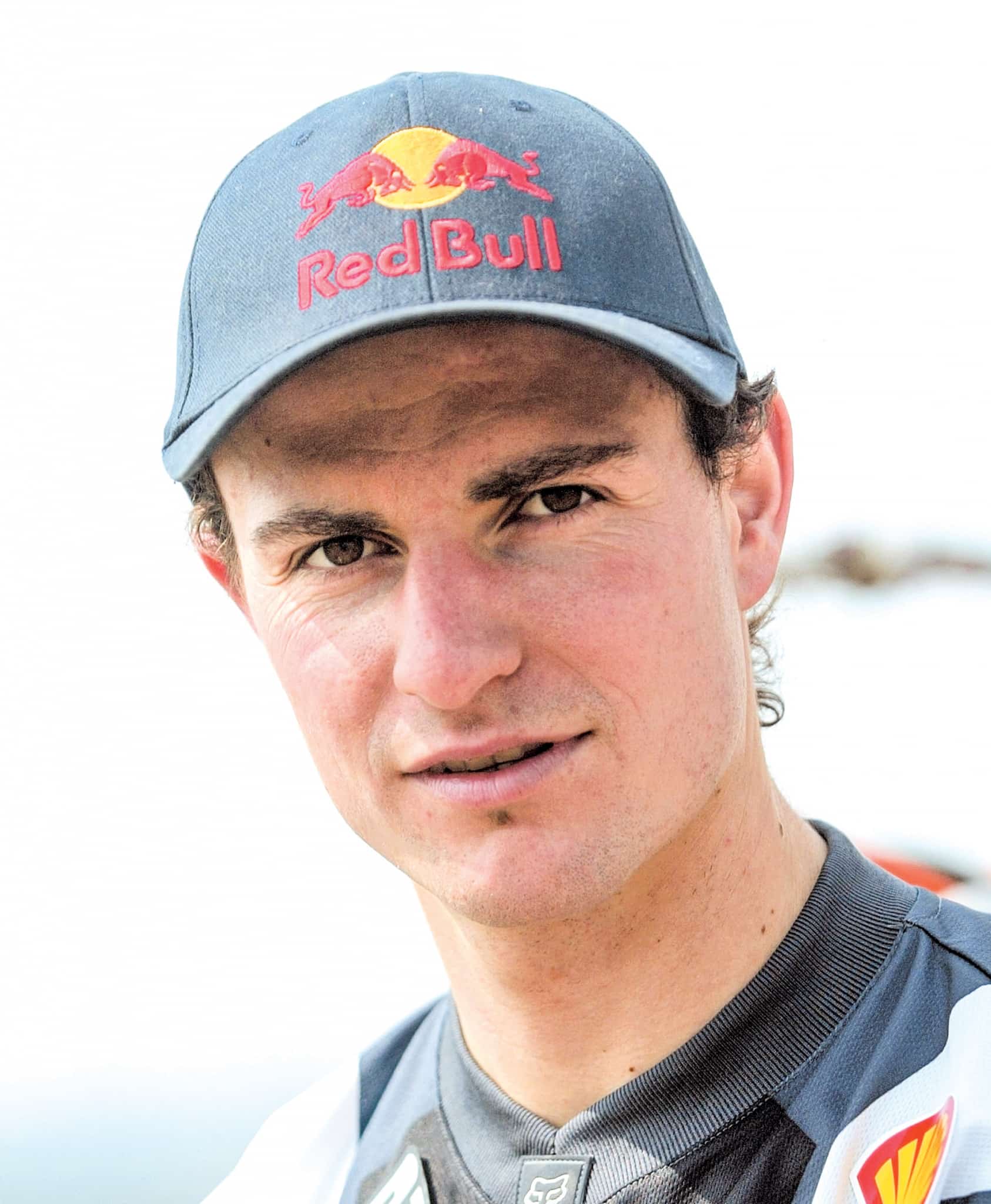
IS THIS YOUR DREAM JOB? For sure. To ride dirt bikes almost every day is great. I also really like to work on bikes and go into detail. As the test rider group, we are also very involved in developing new parts on the bike. We have a big role. Each test rider gives his input, and it goes into production. I also get to ride a lot of factory bikes from our KTM, Husqvarna and GasGas teams in Europe. It’s good to see what each rider likes. We also have all the Japanese bikes that we ride, too; there’s no hiding that. We compare them with our bikes, engine stuff and suspension stuff. It’s good to compare our bikes with other brands to make sure that we don’t get too far away from the other brands.
MXA GOT TO RIDE ANTONIO CAIROLI’S KTM 450SXF RACE BIKE AND HIS FORKS WERE STIFF. For me, I don’t know how the Pros ride with the 52mm forks. It’s amazing. Armenias Jasikonis’ Husqvarna forks were like two steel rods compared to Cairoli’s forks when I rode them. If you think Cairoli’s forks are stiff, you should try Armenias’; they are much stiffer. But, I think when you see the results, there must be a reason they have them so stiff. Maybe when I go 10 seconds a lap faster, I’ll think I need stiffer forks. But for my speed, I like to have my bike.
DO THE FACTORY TEAMS WORK CLOSELY WITH R&D? Yes, I think the cooperation is good, and it must be especially close now that we are on the 2023 bike. The teams need to get the parts and information as quickly as possible. We’ve worked on the 2023 bike now for four years, and we had problems with it before. It wasn’t easy to get the suspension right for this bike. So, when a factory team starts, there is a learning curve for the team. For the first test, I went together with WP to test the factory bike, just to help them a little bit with the direction they need to take and what they need to do. Every time there is a little bit of give and take between motorsport and R&D.
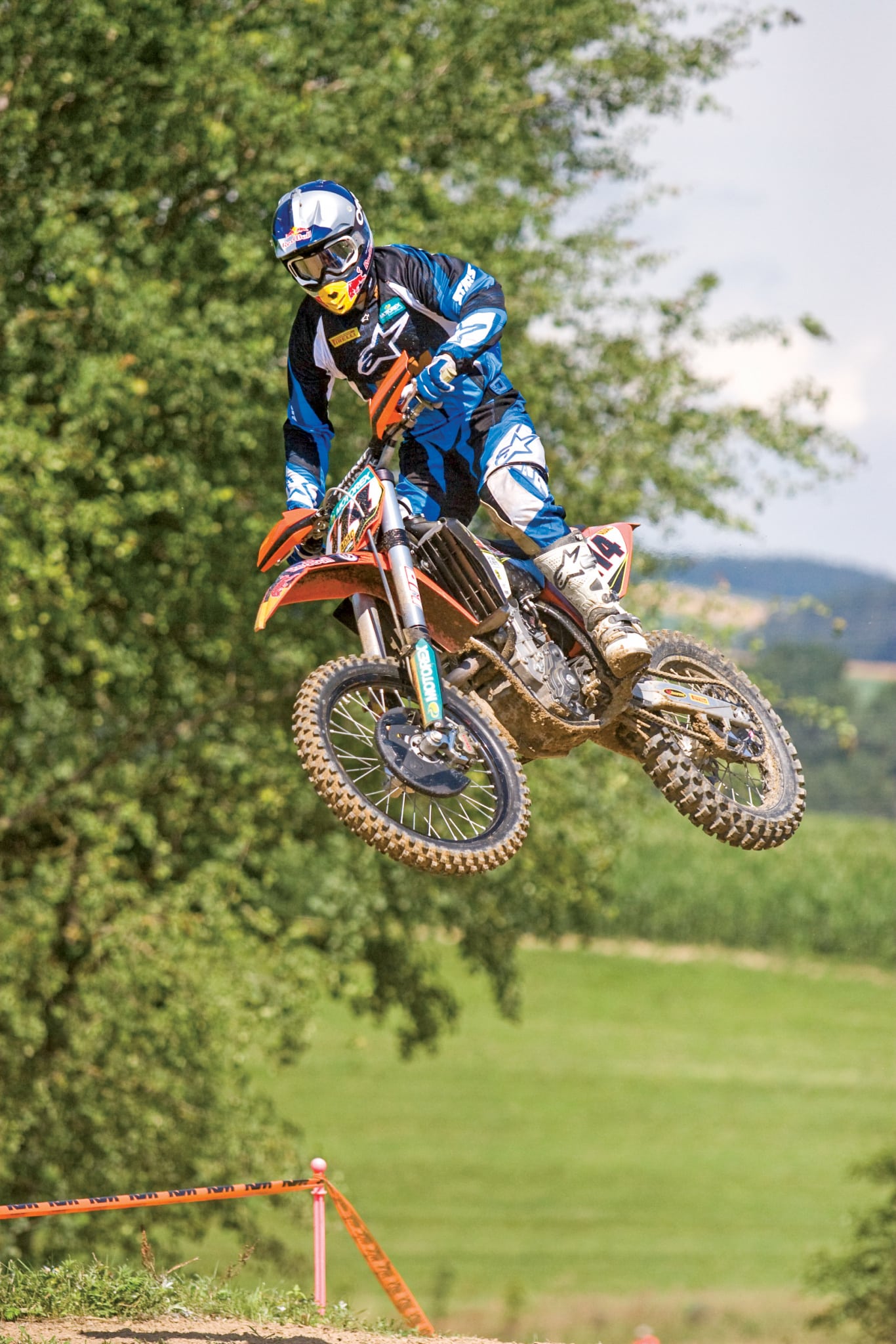
WHAT INSPIRED A BIG CHANGE FROM THE 2022 TO THE 2023 BIKE? I think we were on a really good level with the 2022 bike. But when you change to the ’23, from my side, after riding the ’23 bike for three years, jumping back on the 2022 bike is weird. There is too much flex. It’s a good bike, because in the end, when I say it’s a bad bike, I also was involved in that bike. For me, the 2023 is also a good bike. We stepped it up, maybe a little bit too much with the more planted, solid, rigid feeling. We think about this, too, that maybe it was a step too far. But, I think when you ride the 2023 bike more and for longer, and you jump back on the 2022, you will appreciate the difference on the 2023. There is a big difference between the frame and swingarm. It handles differently. The 2023 bike is the biggest change that we’ve made since we switched from the PDS to the linkage system in 2011. Since then, we’ve made updates, but now, for 2023, the bike is very different.
“WE HAVE ALL THE JAPANESE BIKES THAT WE RIDE, TOO; THERE’S NO HIDING THAT. WE COMPARE THEM WITH OUR BIKES, ENGINE STUFF AND SUSPENSION STUFF. IT’S GOOD TO COMPARE OUR BIKES WITH OTHER BRANDS TO MAKE SURE THAT WE DON’T GET TOO FAR AWAY FROM THE OTHER BRANDS.”
HOW HARD IS IT TO MAKE BIG CHANGES EVERY YEAR? I think Japanese brands have a bike for four or five years before they can make a new bike. For KTM, as you’ve seen in the past, we make bigger changes in a shorter amount of time. If you look from 2010 to now at how much we’ve changed, you can expect similar changes like this in the future. Right now, the 2023 bike is out, but we are already looking forward to 2024, 2025, 2026 and 2027. There is a plan in place.
One thing we noticed with the 2022 450SXF is the range was great for everyone from Beginners to MXGP riders. Tanel Leok raced a stock KTM 450SXF in the MXGP series last year and scored good finishes with stock suspension, just with more air in the forks. And, the Beginner riders I speak with at the tracks in Austria, they also like the stock KTM 450SXF. This is what our goal is, to be “Ready to Race,” but also to be good for the Beginner riders.





Comments are closed.